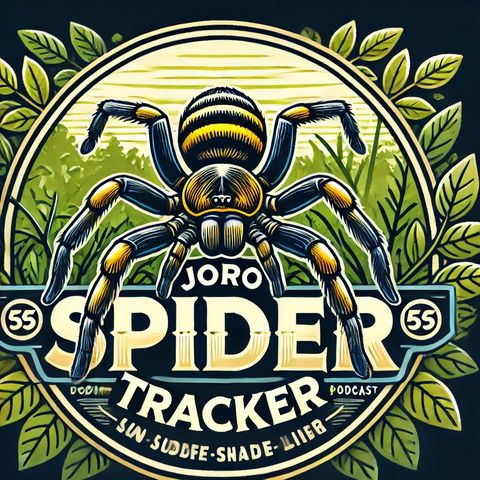Fascinating Invaders: The Joro Spiders' Rapid Spread Across the U.S.
Jun 16, 2024 ·
2m 44s

Download and listen anywhere
Download your favorite episodes and enjoy them, wherever you are! Sign up or log in now to access offline listening.
Description
The Joro spider, known scientifically as Trichonephila clavata, is a striking species not native to North America, having made its way from East Asia. Found predominantly in Japan, China, Korea,...
show more
The Joro spider, known scientifically as Trichonephila clavata, is a striking species not native to North America, having made its way from East Asia. Found predominantly in Japan, China, Korea, and Taiwan, this species has become a topic of interest and concern in the United States due to its invasive status and notable presence, particularly in the Southern states.
Joro spiders are part of the orb-weaver family, a group known for their intricate web designs. These spiders can grow to a considerable size, with their leg spans reaching up to four inches. Their webs can be equally impressive, spanning several feet in width and often shimmering with a golden hue that is both beautiful and functional, serving to attract prey while being strong enough to withstand the impact of larger insects.
One of the most fascinating aspects of Joro spiders is their method of dispersal. The spiderlings use a technique known as ballooning, where they release silk strands that catch the wind, allowing them to 'fly' or glide through the air to spread to new areas. This method of travel increases their ability to colonize new regions rapidly, although it also contributes to their status as an invasive species.
Despite their alarming appearance and invasive status, Joro spiders are generally not a threat to humans. They possess venom, which they use to subdue their prey, but it is not harmful to humans. The mild venom combined with their non-aggressive nature typically makes them more of a curiosity than a danger.
However, the presence of Joro spiders can have mixed effects on local ecosystems. As predators, they can help control the populations of pests, including some insects that affect garden plants and crops. On the other hand, their quick spread and large webs can outcompete native spider species, potentially disrupting local ecological balances.
In terms of management, while there are no widespread measures currently recommended or required to control their population in the U.S., awareness and monitoring are crucial. Natural predators, like birds or other larger animals, may help keep their populations in check naturally.
The rapid spread of the Joro spider in the United States generates a range of reactions, from fascination to concern. Research continues to better understand their impact and how best to manage their presence in non-native ecosystems. Their unique characteristics and behaviors, notably their 'flying' capability through ballooning, ensure that they remain a subject of interest both to scientists studying invasive species and to the general public encountering them in their backyards.
show less
Joro spiders are part of the orb-weaver family, a group known for their intricate web designs. These spiders can grow to a considerable size, with their leg spans reaching up to four inches. Their webs can be equally impressive, spanning several feet in width and often shimmering with a golden hue that is both beautiful and functional, serving to attract prey while being strong enough to withstand the impact of larger insects.
One of the most fascinating aspects of Joro spiders is their method of dispersal. The spiderlings use a technique known as ballooning, where they release silk strands that catch the wind, allowing them to 'fly' or glide through the air to spread to new areas. This method of travel increases their ability to colonize new regions rapidly, although it also contributes to their status as an invasive species.
Despite their alarming appearance and invasive status, Joro spiders are generally not a threat to humans. They possess venom, which they use to subdue their prey, but it is not harmful to humans. The mild venom combined with their non-aggressive nature typically makes them more of a curiosity than a danger.
However, the presence of Joro spiders can have mixed effects on local ecosystems. As predators, they can help control the populations of pests, including some insects that affect garden plants and crops. On the other hand, their quick spread and large webs can outcompete native spider species, potentially disrupting local ecological balances.
In terms of management, while there are no widespread measures currently recommended or required to control their population in the U.S., awareness and monitoring are crucial. Natural predators, like birds or other larger animals, may help keep their populations in check naturally.
The rapid spread of the Joro spider in the United States generates a range of reactions, from fascination to concern. Research continues to better understand their impact and how best to manage their presence in non-native ecosystems. Their unique characteristics and behaviors, notably their 'flying' capability through ballooning, ensure that they remain a subject of interest both to scientists studying invasive species and to the general public encountering them in their backyards.
Information
| Author | QP-4 |
| Website | - |
| Tags |
Copyright 2024 - Spreaker Inc. an iHeartMedia Company
